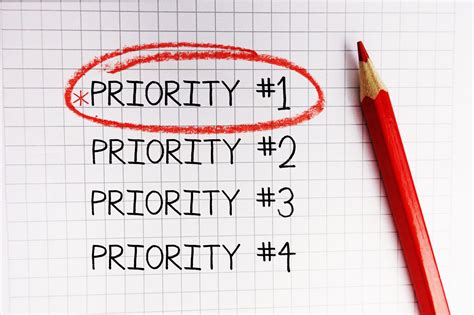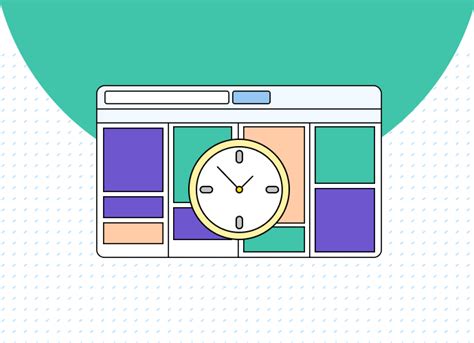Boost Your Productivity: Mastering the Art of Time Efficiency
Time waits for no man. It slips away, tick by tick, without regard for our endless to-do lists and mounting responsibilities. In our fast-paced society, it's becoming increasingly crucial to harness the power of time in order to accomplish everything we set out to do. Whether you're a busy professional juggling multiple projects or a student trying to find balance amidst the chaos, effective time management is the key to unlocking your true potential.
But what exactly is time efficiency, and how can we achieve it? At its core, time efficiency refers to the art of maximizing the productivity and effectiveness of our actions within the limited time we have. It's about optimizing your daily routines, prioritizing tasks, and minimizing distractions to ensure that each moment is utilized to its fullest potential. By mastering the principles of time efficiency, you can free up valuable minutes, hours, and even days, enabling you to achieve more than you ever thought possible.
The path to time efficiency is paved with a multitude of strategies and techniques, carefully crafted to suit individual needs and preferences. From behavioral adjustments to technology-based solutions, there is no shortage of tools at your disposal. By implementing these proven time management methods, you can take control of your schedule, reduce stress levels, and ultimately enhance your productivity.
Prioritize Your Tasks

In the realm of efficient time utilization, one crucial aspect is the ability to prioritize our daily tasks effectively. Prioritization involves identifying and organizing tasks according to their importance and urgency, enabling us to allocate our time and energy efficiently.
When faced with a multitude of tasks, it is essential to evaluate their significance in order to determine the order in which they should be tackled. This allows us to focus on high-priority tasks that align with our goals and objectives, while ensuring that urgent tasks are addressed promptly to avoid any negative consequences.
One effective method of prioritization is using the Eisenhower Matrix, which categorizes tasks into four quadrants based on their importance and urgency. This matrix assists in visualizing the tasks and their respective priorities, making it easier to determine the order in which they should be completed.
| Quadrant | Importance | Urgency |
|---|---|---|
| 1 | High | High |
| 2 | High | Low |
| 3 | Low | High |
| 4 | Low | Low |
In quadrant 1, tasks are both important and urgent, requiring immediate attention. These tasks should be prioritized and dealt with promptly to prevent negative consequences. Quadrant 2 consists of tasks that are important but not urgent. Although they may not require immediate attention, dedicating time to these tasks is essential to prevent them from becoming urgent in the future.
Quadrant 3 comprises tasks that are urgent but not necessarily important. While it may be tempting to address these tasks promptly, it is important to evaluate their significance before allocating time and resources. Lastly, quadrant 4 includes tasks that are neither urgent nor important. These tasks are generally low priority and can be addressed at a later time or delegated to others if possible.
By effectively prioritizing our tasks using methods like the Eisenhower Matrix, we can optimize our time management and ensure that important and urgent tasks are handled efficiently. This approach allows us to focus our time and energy on tasks that have significant impact, leading to increased productivity and overall success in achieving our goals.
Setting Attainable Goals: A Key to Effective Time Management
When it comes to managing our time effectively, one crucial aspect is setting realistic goals. Goal setting can help us prioritize our tasks, stay motivated, and ensure that our efforts are focused on achieving meaningful outcomes. By setting attainable goals, we can optimize our time usage and make significant progress towards our objectives.
Here are some key considerations when it comes to setting realistic goals:
- Define your objectives clearly: Begin by clearly defining what you want to achieve. This will help you establish a sense of purpose and guide your actions in the right direction.
- Break it down: Breaking down your goals into smaller, manageable tasks allows you to create a roadmap for success. This approach helps you stay organized and makes the overall goal feel more attainable.
- Set specific deadlines: It's important to set specific deadlines for each task or sub-goal. Deadlines create a sense of urgency, which can boost productivity and prevent procrastination.
- Prioritize wisely: Not all tasks are created equal. Prioritize your goals based on their importance and urgency. This will ensure that you focus your time and energy on the most critical tasks first.
- Consider your resources: Assess the resources available to you, such as time, skills, and support. Be realistic about what you can achieve with the resources at hand.
- Embrace flexibility: While setting realistic goals is crucial, it's also important to be flexible and adaptable. Life can throw unexpected curveballs, so be prepared to adjust your goals when necessary.
By implementing these strategies, you can set realistic goals that align with your priorities and optimize your time management. Remember that setting attainable goals is a continuous process, and it's okay to re-evaluate and readjust your goals as needed. With a clear focus and realistic expectations, you'll be on your way to achieving more in less time.
Minimize Distractions

Increase your productivity and efficiency by reducing external interruptions and distractions that hinder your ability to focus and complete tasks effectively. Eliminating needless diversions and staying focused on the task at hand are paramount to accomplishing more in less time.
Optimize your work environment by creating a quiet and clutter-free space that promotes concentration. Minimize background noise by using earplugs or playing soft instrumental music. Keep your work area organized, ensuring that essential tools and resources are easily accessible.
Avoid multitasking as it can lead to decreased productivity and lower quality of work. Instead, prioritize your tasks and focus on one at a time, allocating specific time blocks for each. Use time management techniques such as the Pomodoro Technique to work in concentrated sprints and take short breaks in between to refresh your mind.
Manage digital distractions by turning off email and social media notifications during focused work periods. Dedicate specific times throughout the day to check and respond to messages rather than constantly being interrupted by incoming notifications. Consider using website blockers or productivity apps that limit access to time-wasting websites and applications.
Additionally, communicate your need for uninterrupted work time to colleagues, family members, and other potential disruptors. Establish boundaries and set clear expectations regarding when you can be reached and when you require uninterrupted focus. This way, you can minimize interruptions and maximize your productivity.
By minimizing distractions and maintaining a focused mindset, you can effectively manage your time, accomplish tasks efficiently, and ultimately achieve your desired goals in a shorter period.
Delegate and Outsource
Enhance productivity by effectively delegating and outsourcing tasks to others. By distributing responsibilities among a team or hiring external professionals, you can concentrate on the most crucial and strategic aspects of your work.
1. Delegate:
- Identify tasks that can be completed by team members or subordinates and assign them accordingly.
- Provide clear instructions and expectations to ensure the delegated tasks are executed effectively.
- Regularly communicate with your team to track progress, offer guidance, and address any challenges.
- Trust your team members' abilities and let them take ownership of their delegated tasks.
2. Outsource:
- Identify non-core activities or specialized tasks that can be outsourced to external professionals or service providers.
- Conduct thorough research to find reputable and reliable outsourcing partners.
- Clearly communicate your requirements, deadlines, and expected outcomes to outsourcing partners.
- Regularly review and evaluate the progress and quality of the outsourced tasks.
- Ensure effective communication and collaboration with the outsourcing partners to maintain a productive working relationship.
By effectively delegating and outsourcing, you can focus on high-priority tasks and maximize your productivity, allowing you to achieve more in the available time without compromising the quality of your work.
Boost Productivity with the Time Blocking Technique

To optimize your workflow and accomplish tasks efficiently, the time blocking technique can be an invaluable tool. This strategy involves allocating specific blocks of time for different activities, effectively organizing your day and enhancing your productivity. By dividing your schedule into focused intervals, you can prioritize tasks, eliminate distractions, and make the most of each moment, ensuring you achieve your goals.
Enhanced Focus: With time blocking, you dedicate uninterrupted periods to particular tasks, enabling you to concentrate fully on each activity. By eliminating distractions and focusing solely on one task at a time, you can enhance your focus and improve the quality of your work.
Prioritization: Time blocking allows you to prioritize tasks and allocate appropriate amounts of time to each one. By evaluating the importance and urgency of different activities, you can assign dedicated time slots, ensuring that essential tasks are completed promptly and efficiently.
Improved Organization: By visually mapping out your day through time blocking, you create a structured workflow. This visualization helps you better understand the available time slots, identify potential gaps or overlaps, and adjust your schedule accordingly. This level of organization allows for better planning and reduces the likelihood of missed deadlines.
Flexibility with Breaks: Incorporating breaks into your time blocking schedule is crucial for both productivity and well-being. By scheduling short breaks between tasks or allowing longer breaks after intense periods of work, you can prevent burnout, recharge your energy, and maintain focus throughout the day.
Implementing the time blocking technique can revolutionize your approach to time management. By strategically segmenting your day, you can increase your productivity, prioritize tasks effectively, and achieve a greater sense of control over your schedule.
Take Regular Breaks
One key element to effectively managing your time is by taking regular breaks throughout your day. By incorporating intentional moments of rest and relaxation, you can enhance your productivity and overall well-being.
Allowing yourself to step away from your tasks periodically allows your mind to recharge and refocus. It can help prevent mental fatigue and improve concentration, enabling you to approach your work with renewed energy and creativity.
When taking breaks, be mindful of how you spend your time. Engaging in activities that are unrelated to work, such as going for a short walk, practicing deep breathing exercises, or listening to music, can be beneficial. These activities help shift your focus away from work-related stressors and give you a chance to clear your mind.
Remember, breaks do not need to be lengthy to be effective. Even a short 5-10 minute break can have a significant impact on your productivity. Set a timer or use specific cues, such as completing a task or reaching a designated time, to remind yourself to pause and take a break.
Incorporating regular breaks into your schedule can also help prevent burnout and maintain a healthy work-life balance. It allows you to prioritize self-care and gives you time to recharge, reducing the risk of feeling overwhelmed or stressed.
In conclusion, taking regular breaks is an essential aspect of effective time management. By intentionally incorporating moments of rest and relaxation into your day, you can enhance productivity, maintain focus, and ensure overall well-being.
FAQ
How can I manage my time more effectively?
There are several tips that can help you manage your time more effectively. Firstly, prioritize your tasks by making a to-do list and identifying the most important and urgent ones. Secondly, eliminate distractions such as phone notifications or unnecessary meetings. Thirdly, break down large tasks into smaller, more manageable ones. Additionally, try to delegate tasks if possible and schedule regular breaks to maintain productivity. Lastly, consider using time management tools and techniques, such as the Pomodoro technique or time blocking.
What are some strategies for improving productivity?
There are various strategies you can implement to improve your productivity. Firstly, establish a routine by setting specific times for different types of activities, like checking emails or working on important tasks. Secondly, learn to say no to tasks that do not align with your goals or priorities. Thirdly, take care of your physical and mental health by exercising regularly, getting enough sleep, and managing stress. Moreover, try to batch similar tasks together to minimize context switching. Lastly, learn to leverage technology in a way that helps rather than hinders your productivity, such as using productivity apps or time tracking tools.
How can I overcome procrastination?
Overcoming procrastination can be a challenge, but there are techniques you can use. Firstly, break down tasks into smaller, more manageable steps to reduce feelings of being overwhelmed. Secondly, set specific and achievable goals, and reward yourself for completing them. Thirdly, create a conducive work environment by removing distractions and minimizing interruptions. Additionally, find an accountability partner or join a productivity group to stay motivated and on track. Another approach is to practice the two-minute rule, which means if a task takes less than two minutes, do it immediately instead of putting it off. Lastly, try to understand the underlying reasons for your procrastination and address them, whether it's fear of failure, perfectionism, or lack of interest.



